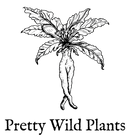A Brief History of Colour from Nature
Long before synthetic dyes filled the modern world, people turned to the land for colour. Every culture across time, from ancient Egypt to medieval Europe, from West Africa to Japan has drawn vibrant pigments from roots, leaves, flowers, and bark.
Plants like woad, madder, and weld produced the classic trio of blue, red, and yellow that once coloured everything from royal robes to everyday cloth. These were prized for their colour fastness, meaning they held their richness over time. Others, like calendula, hollyhock, or elderberries, offered fugitive dyes, beautiful but fleeting, shifting with light and age, like the seasons themselves.
A Little Folklore & Magic
Many dye plants carry rich stories. Woad was said to give warriors strength, and madder, with its blood-red hue, was linked to vitality and protection. In folk traditions, dyeing was often ritualised: a way of transforming not just cloth, but energy. The process of gathering, preparing, and dyeing was slow, intentional, and full of meaning.

Dyeing Today
Natural dyes continue to inspire artists, herbalists, and gardeners, not only for colouring cloth, but in seasonal crafts like steam bundling, botanical printing, and solar dyeing. Many dye plants can also be transformed into pigments for ink, paint, or natural watercolours, offering a deeper connection to the earth’s palette. These practices celebrate the direct imprint of leaf and petal, capturing the vivid beauty of a moment in time. In working with natural dyes, we honour the old ways while creating something entirely personal and alive.

